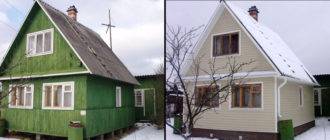If we consider the stairs from the point of view of the safety of movement along it, then first of all you need to pay attention to the issue of highlighting its steps.
In the dark, it is very easy to get injured, going down or up a dark march.

The stairs should be light
It turns out that lighting of stairs and steps it is also a matter of simple safety and comfort, and only then requirements for a certain aesthetic component. This is true.
What is taken into account when choosing lighting
In order for the coverage of the march to be successful and bring as much benefit as possible, you should pay attention to the following points:
- The location of the stairs. Indoors or outdoors.
- Light source can be local, that is, intended only for steps, or general.
- The luminaire can be placed either on the wall, on a special support, or mounted in the steps.
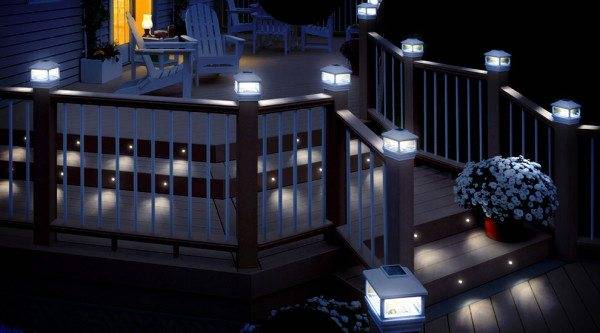
There is nothing complicated here, just these moments determine the area of work in which it will be necessary to move.
If we talk about areas of use, then we can immediately say that the instruction assumes a comfortable state of stairs in any type of building. It is not even possible to make a list here, nor to carry out some kind of classification, in the light there should be stairs everywhere and always, perhaps, this is the most correct attitude to this structure.
Light source
But this is already a significant moment in the choice of design solutions for the march.
For example, you can divide light sources into two simple types:
- Natural means simple sunlight.
- Artificial: lamps, lamps, LED elements.
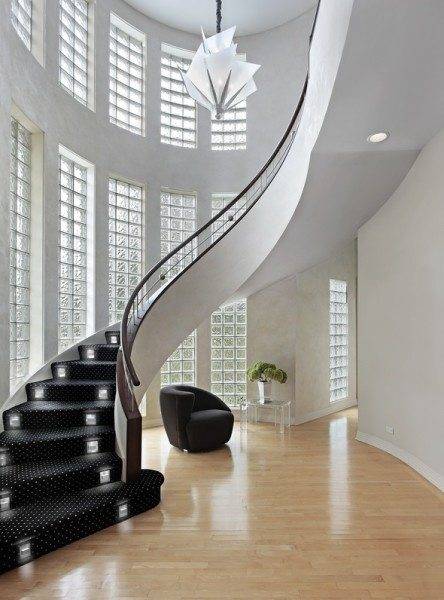
Naturally, if the room has windows through which a sufficient amount of daylight penetrates, you can limit yourself to just a few bulbs at night. Moreover, a few primitive devices will be enough for the entire march, unless there is a need for bright lighting..
Thus, the staircase will always be either in daylight or in electric lighting.
Advice!
Mirrors are ideal for diffusing light, so you can easily save on electricity if you place several mirrors in the room with a march, and so that they are opposite the windows.
If we are talking about basements, here it is easy with your own hands to simply hang one lamp scattering light, or a fluorescent lamp above the steps, the whole staircase will look like.
Constructive moments in stairs
You can consider the moment of the construction of the march, for example, from the simplest definition, according to its length. After all, the longer the span, the more difficult it is to illuminate it. And here it is most logical to use automatic lamps at the beginning of the staircase and at the end. This method is great for a single flight of stairs.
However, what about the spiral staircase? The work here always requires a more detailed and more complex approach. It is in this version that you can use lamps to illuminate the steps of the stairs, and each step can be highlighted, and after a few pieces, it all depends on the settings and settings.

Types of lighting action
Several types of lighting interaction can be used in the lighting of spans, this is not only an artificial and natural type, but also:
- Straight.
- Scattering.
- Reflected.
- Combined.
Each of these points can affect both the illumination of the entire span and the brightness.
Advice!
Initially, you need to decide what functional features you want to get from the light.
If only safety and comfort, then a simple lamp will do, if you need a decorative component, you will have to take into account a lot of external factors.
Devices
It is clear that the simplest solution may be a simple chandelier or lamp above the flight of stairs. In principle, these devices fully fulfill their main duties, but do not give a visual effect and do not always fit into the interior design.
More interesting, in this respect, is a staircase with illumination of steps, devices of this type can also be called local illumination tools, they are located either in the vertical part of the steps, or on the side of the wall, and thus objectively scatter the light onto the horizontal plane of the steps.
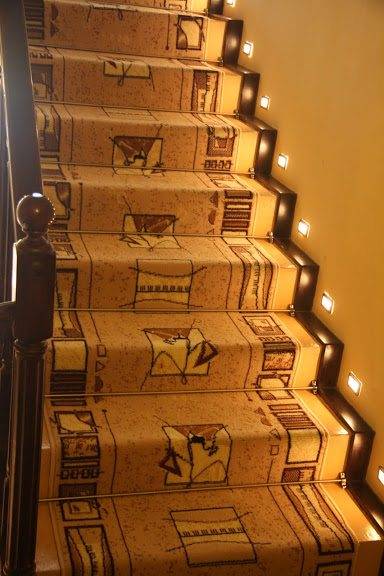
Important!
The local method also has its drawbacks.
Firstly, to illuminate all the steps of a long march, it will take up to 18 lights, based on the maximum number of steps allowed.
It does not always look pretty, but rather bright and catchy.
Secondly, it is quite expensive, and from this point of view, it is also not rational.
In a situation with a local device, it will be easier to LED lights, which gives a soft, pleasant light that does not hurt the eyes, does not give a strong brightness, but at the same time fully fulfills its main functional task.
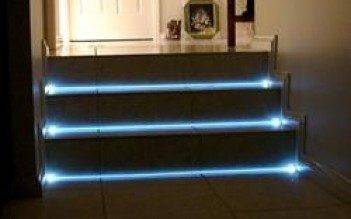
Interesting solutions
The most interesting option for a staircase lighting solution remains in the field of using LED technology.
The fact is that this type of lighting technology has some undoubted advantages:
- Versatility. Various types of LED strip can be used in any environment, both indoors and outdoors.
- Color palette.
- Low price.
- Long service life, up to 10 years without replacement.
- Security, 12 volt power supply.
- The ability to adjust the brightness.
Output
The main functional theme of any staircase luminaire should be to ensure safe movement. True, this does not remove the possibility of combining safety with a pleasant and interesting appearance of the march. (see also Stairway rungs: protection, decor and comfort)
It is possible to perfectly combine all the necessary lighting requirements in a wide range of devices and their arrangement along the structure. And in the video presented in this article, you will find additional information on this topic.

